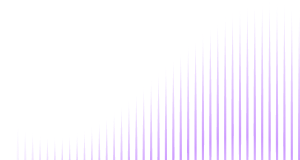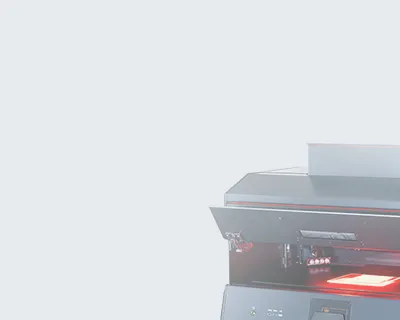

Nearly 1.5 million border crossings annually
Document verification automation
Identity fraud prevention
Ecuador’s border control authorities are responsible for safeguarding the country's land, air, and maritime entry points, including major international airports in Quito and Guayaquil, and key land border crossings in the north and south. These checkpoints handle nearly 1.5 million travelers annually. Ensuring secure and efficient document verification at these points is essential for national security and smooth cross-border mobility.
Challenge
Border security in Ecuador was facing a serious technology gap. At key migration checkpoints, identity document verification was mostly being done manually, employing very basic and sometimes outdated equipment. This setup made it difficult and time-consuming to authenticate documents, increasing the risk of identity fraud. With just two experts assigned to each border office, the process was slow and unsustainable.
The government’s goal was to modernize all border points with advanced document verification equipment to speed up checks and improve fraud detection accuracy.
Solution
To help Ecuador achieve this, Regula—through a partnership facilitated by the International Organization for Migration (IOM) and INSETK—deployed a series of forensic document examination devices at strategic locations:
Quito International Airport: Regula 4308
At the capital’s main airport, authorities installed the Regula 4308, a high-precision dual-video spectral comparator designed for advanced forensic examination. With two optical paths (top and bottom), up to 320x optical zoom, and resolution reaching 140,000 ppi, the Regula 4308 offers unmatched image clarity. The device is equipped with over 30 different types of light sources, including ultraviolet (UV), infrared (IR), coaxial, oblique, and transmitted light, as well as a wide range of optical filters. These capabilities allow in-depth inspection of security features such as printing techniques, watermarks, microprinting, optically variable devices (OVDs), holograms, optically variable inks, and others to authenticate documents. This makes it an ideal solution for airports where high passenger flow demands both speed and scrutiny.
Guayaquil Airport and Key Land Borders: Regula 4306
The compact yet fully equipped video spectral comparator Regula 4306 was installed at Guayaquil International Airport, and at several northern and southern border crossings. Featuring an 8 MP camera and 40+ LED light sources, this device (just like its counterpart, the Regula 4308) enables detailed checks of document authenticity. Its small footprint makes it ideal for space-restricting facilities, without compromising forensic capabilities.
Frontline Border Control Points: Regula 4205D
For several checkpoints, Ecuador deployed the Regula 4205D, a multi-function device designed specifically for frontline border control officers. The Regula 4205D includes 12 light sources (including UV-A, UV-B, and UV-C), 30x on-screen magnification, and automated data cross-checks, which makes manual document authenticity checks quick but thorough.
Mobile Checkpoints: Regula 8333M
To support border control operations in remote or non-standard locations, such as when a charter flight of a cruise ship arrives outside regular migration facilities, Ecuador employed the portable workstation Regula 8333M. Compact in size and optimized for field use, this document reader enables fast and accurate verification of a wide variety of IDs. It delivers processed results in just a few seconds and supports up to six hours of continuous, autonomous operation, making it an ideal time-saving solution for mobile teams. The Regula 8333M consists of an optical document reader paired with an 8-inch multi-touch tablet PC, which comes with an IP67 protection rating for use in rugged environments.
Regula’s video spectral comparators are controlled via Regula Forensic Studio (RFS), a cross-platform software solution for comprehensive document checks. It supports precise measurements, image comparison and overlay, as well as report generation for documentation and audits. For recurring inspection tasks, RFS allows users to create and run scripts, streamlining processes and improving operational speed and consistency at border checkpoints. Also, with RFS, Ecuadorian officers can instantly analyze MRZs, RFID chips, barcodes, and even invisible personal information (IPI) without needing additional tools.
For deeper verification, officers use the Information Reference System (IRS), which provides synchronized reference images and lighting settings to ensure fast, accurate comparisons of travel documents.
Additionally, RFS can be integrated with Regula Document Reader SDK to automate and facilitate travel document checks. For example, this enables data cross-verification to spot fraud through inconsistencies and illegal alterations of personal information. Crucially for border crossing operations, Regula’s software is powered by Regula’s proprietary identity document template database—the largest of its kind—containing over 15,000 templates from 252 countries and territories.

Result
Since implementing Regula’s forensic devices, Ecuador’s border control authorities have significantly improved both the speed and accuracy of identity document verification.
- What used to take hours can now be done in minutes, freeing experts to focus on other tasks.
- With IRS integration, officers know exactly what security features to look for, reducing human error.
- Detection of fraudulent documents has improved dramatically, thanks to high-resolution imaging and smart automation.
This project replaced outdated or nonexistent technology with advanced forensic tools and made document checks easier, faster, and more reliable.

Apart from the technology upgrade and fraud detection improvement at the border crossing, our collaboration with Regula demonstrated another success. The project was fulfilled very smoothly. From the beginning, we’ve received full support from Regula’s team—they were always ready to help with any issue, even if it was caused by users on the ground. It’s definitely a level of service that makes a real difference.
—Diego Calderon, Chief Executive Officer at INSETK





